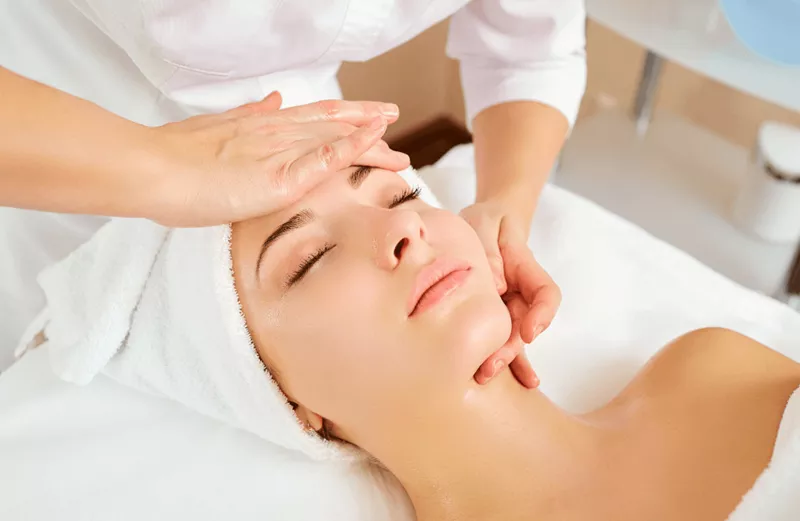What Is Allergic Rhinitis and Why Does It Matter?
Allergic rhinitis, often referred to as hay fever, is more than just a seasonal annoyance. For millions of people around the world, it is a chronic condition that interferes with daily life. This immune system overreaction to harmless substances—like pollen, pet dander, mold spores, or dust mites—can cause persistent symptoms such as sneezing, nasal congestion, itchy eyes, postnasal drip, and fatigue. While it may not be life-threatening, its impact on comfort, sleep, focus, and mood is undeniable.
Understanding and managing allergic rhinitis requires more than just treating symptoms when they appear. It’s a condition that calls for a comprehensive and proactive approach. Whether your symptoms are mild or severe, seasonal or year-round, finding the best treatment strategy can drastically improve your quality of life. In this article, we will explore the five most effective methods for treating allergic rhinitis—methods that are backed by science, recommended by health professionals, and proven to work.
First: Allergen Avoidance Is the Foundation
The most logical way to treat allergic rhinitis is to avoid the substances that trigger it. While it’s impossible to completely eliminate allergens from your environment, reducing your exposure can significantly minimize symptoms. If you are allergic to pollen, staying indoors on high pollen count days, using air conditioning instead of opening windows, and wearing sunglasses outdoors can help keep allergens at bay. Showering and changing clothes after being outside can also reduce the amount of pollen you carry indoors.
For people who are sensitive to dust mites, controlling indoor humidity, washing bedding in hot water weekly, and using allergen-proof mattress and pillow covers are important steps. Removing carpets, heavy curtains, and stuffed animals from bedrooms can also reduce dust buildup. Those allergic to pet dander may benefit from limiting pets to certain areas of the home, using HEPA air purifiers, and bathing pets regularly. Mold-sensitive individuals should fix water leaks promptly, clean damp areas with antifungal solutions, and use dehumidifiers to keep indoor air dry.
Allergen avoidance is not a cure, but it creates a cleaner, safer environment that supports the effectiveness of other treatments. It is the first step in any comprehensive plan and often the simplest, most natural way to start managing allergic rhinitis.
Second: Medications Provide Rapid and Reliable Relief
While avoiding allergens is ideal, it’s rarely enough on its own. Medications are the second pillar of treatment and offer relief when symptoms flare up. Antihistamines are often the first choice. They block the action of histamine, the chemical released during allergic reactions, and are available in oral tablets, syrups, and nasal sprays. Modern antihistamines such as cetirizine, loratadine, and fexofenadine are less likely to cause drowsiness and are safe for daily use.
Nasal corticosteroids are considered the most effective treatment for allergic rhinitis. These prescription or over-the-counter sprays, like fluticasone or mometasone, reduce inflammation in the nasal passages and provide relief from congestion, runny nose, and sneezing. Unlike antihistamines, they need to be used consistently for several days to reach full effectiveness, but the results are long-lasting.
Other medications include decongestants, which shrink swollen nasal tissues and open airways but should be used only short-term due to the risk of rebound congestion. Leukotriene receptor antagonists, such as montelukast, can help in cases involving both allergies and asthma. Saline nasal sprays and rinses, although not drugs, are excellent for flushing out allergens and reducing mucus buildup. Together, these medications form a powerful toolkit to manage symptoms based on your specific needs and lifestyle.
Third: Immunotherapy Offers a Long-Term Solution
For people who suffer from persistent or severe allergic rhinitis, immunotherapy may provide a more permanent solution. This treatment, often called allergy shots, gradually exposes the body to small doses of allergens to build up immune tolerance. Over time, the immune system becomes less reactive to the substances that once caused severe symptoms. Immunotherapy typically involves a build-up phase with weekly injections, followed by a maintenance phase every few weeks for three to five years.
There is also an alternative to injections called sublingual immunotherapy, which involves placing dissolvable tablets or drops under the tongue. This form is especially popular for treating pollen allergies and can be taken at home after the first dose is administered under medical supervision. Sublingual therapy is less invasive than injections but still requires consistency and long-term commitment to be effective.
Immunotherapy doesn’t bring immediate results, but it offers a path to lasting relief, especially for individuals with multiple sensitivities or those who want to reduce their reliance on medications. In some cases, it can also prevent the progression of allergic rhinitis into asthma. It’s a treatment worth considering if your symptoms are not well controlled with avoidance and medication alone.
Fourth: Environmental Control Improves Long-Term Outcomes
Environmental control goes hand in hand with allergen avoidance but takes it a step further. While allergen avoidance focuses on minimizing exposure to known triggers, environmental control involves optimizing your living space to maintain air quality and reduce potential irritants across the board. One of the most effective tools in this approach is the use of high-efficiency particulate air (HEPA) filters. These filters trap airborne allergens and can be installed in vacuum cleaners, air purifiers, and HVAC systems.
Regular and thorough cleaning is another critical element. Using a damp cloth to dust surfaces, vacuuming with a HEPA-filtered vacuum, and cleaning floors and furniture at least once a week helps limit allergen buildup. Mold control is also essential. Mold thrives in damp environments, so bathrooms, kitchens, and basements should be kept dry and well-ventilated. Fixing plumbing leaks and using exhaust fans when cooking or showering can prevent mold growth.
Another aspect of environmental control is reducing exposure to irritants that can worsen allergy symptoms even if they’re not true allergens. These include cigarette smoke, strong perfumes, air pollution, and cleaning chemicals with harsh odors. Creating a clean, allergen-conscious living space not only supports allergy treatment but also promotes general respiratory health.
Fifth: Lifestyle Adjustments and Natural Remedies Support Recovery
Lifestyle habits and natural remedies, while not substitutes for medical treatment, can significantly enhance the management of allergic rhinitis. One of the most overlooked aspects is hydration. Drinking plenty of water helps keep mucus thin and easier to clear from nasal passages. A well-hydrated body is also better equipped to handle inflammation and recover from allergic reactions more quickly.
Another helpful practice is using a saline rinse or neti pot. These tools flush out allergens and mucus from the nasal passages, providing relief from congestion and reducing reliance on medication. They are especially useful during pollen season or after exposure to dust and other irritants. Just be sure to use sterile or distilled water to prevent infections.
Physical activity is beneficial as well. Regular exercise can improve circulation, enhance lung function, and strengthen the immune system. It also reduces stress, which may worsen allergy symptoms. However, those with pollen allergies should exercise indoors when pollen levels are high. Mind-body practices like yoga, meditation, and deep breathing exercises help reduce overall stress and may ease the intensity of allergic reactions by calming the nervous system.
Diet also plays a role. Some studies suggest that a diet rich in fruits, vegetables, omega-3 fatty acids, and antioxidants can help reduce inflammation and strengthen immune response. Avoiding inflammatory foods such as processed items, excessive sugar, and artificial additives may further improve overall symptom control. Although food isn’t a cure for allergies, a healthy body is always better prepared to handle challenges from the environment.
Integrating the Five Methods for Optimal Results
Each of the five strategies discussed—avoiding allergens, using medications, undergoing immunotherapy, practicing environmental control, and making lifestyle adjustments—offers unique benefits. But the most effective treatment plans often combine all five in a way that suits an individual’s specific needs. For instance, someone with mild seasonal allergies may do well with antihistamines and environmental adjustments alone. Meanwhile, a person with severe year-round symptoms might need to commit to immunotherapy along with daily medications and strict allergen avoidance.
Timing and consistency are essential. Medications should be taken as directed, not just when symptoms are unbearable. Environmental measures should be routine, not occasional. Natural remedies should complement, not replace, professional advice. A proactive mindset can transform allergic rhinitis from a disruptive force into a manageable condition.
Personalization is key. There is no one-size-fits-all approach to allergic rhinitis. Tracking your symptoms, working closely with a healthcare provider, and staying informed about new treatments can help you make the best decisions. Over time, small daily efforts accumulate into significant relief and improved quality of life.
Conclusion
Allergic rhinitis may be a common condition, but that doesn’t mean it should be taken lightly. Its impact on physical comfort, sleep, concentration, and mental well-being is substantial. Fortunately, with the right combination of strategies, it is entirely manageable. The five best ways to treat allergic rhinitis—avoidance, medication, immunotherapy, environmental control, and lifestyle improvement—offer a well-rounded and effective toolkit for anyone suffering from this condition.
The goal is not just to control symptoms but to reclaim comfort and live life more fully. With patience, knowledge, and a tailored plan, anyone with allergic rhinitis can breathe easier—literally and figuratively. Talk to your doctor, listen to your body, and take charge of your treatment. Relief is not only possible; it’s within reach.
Related Topics



































